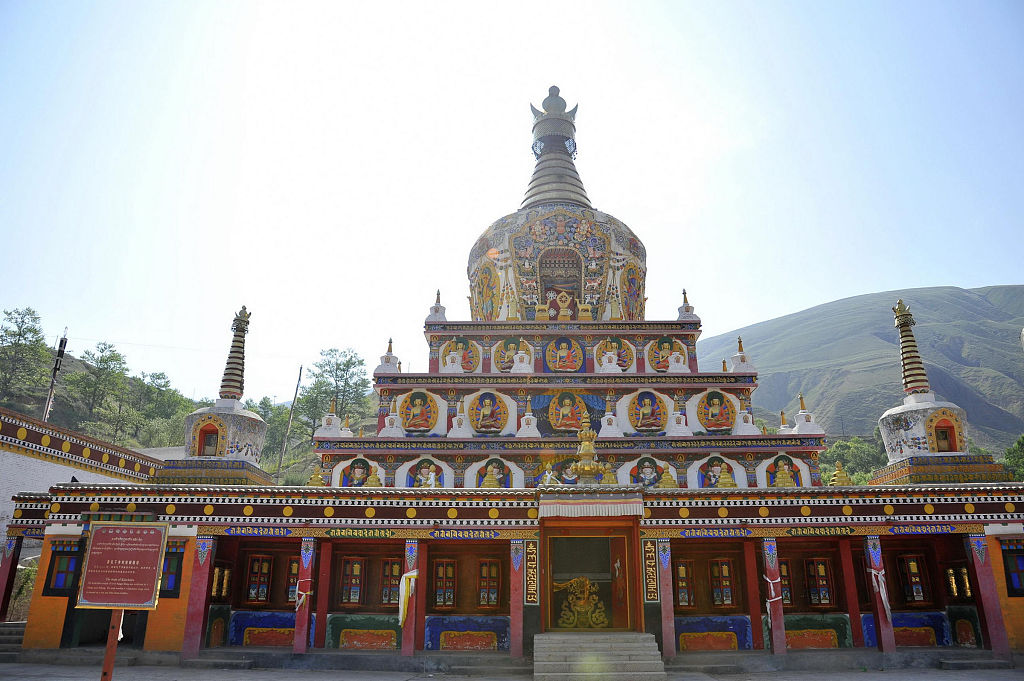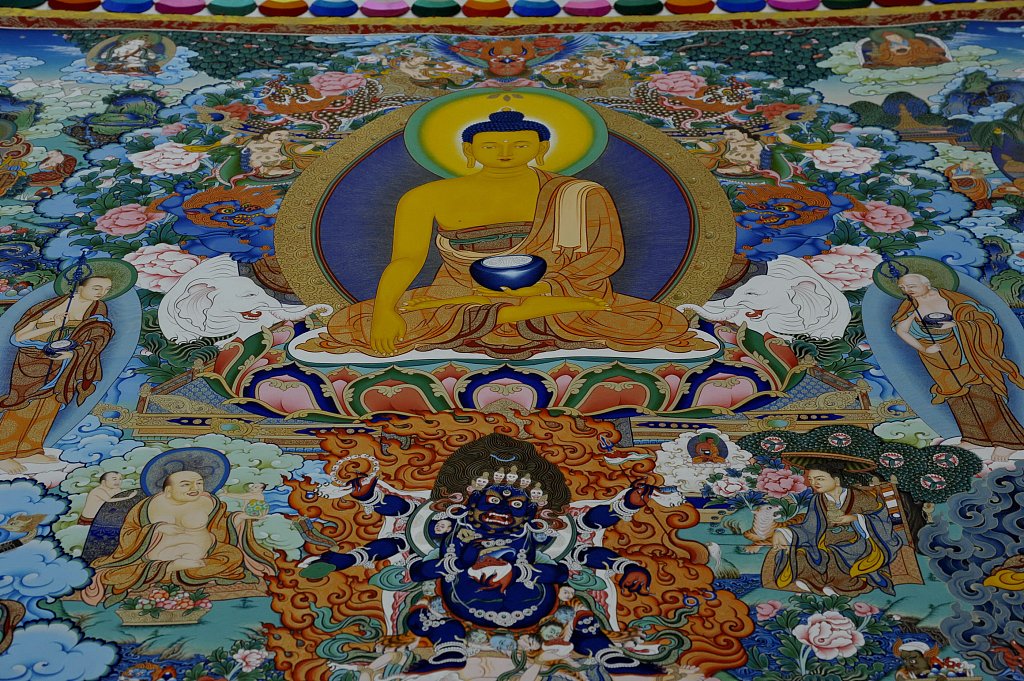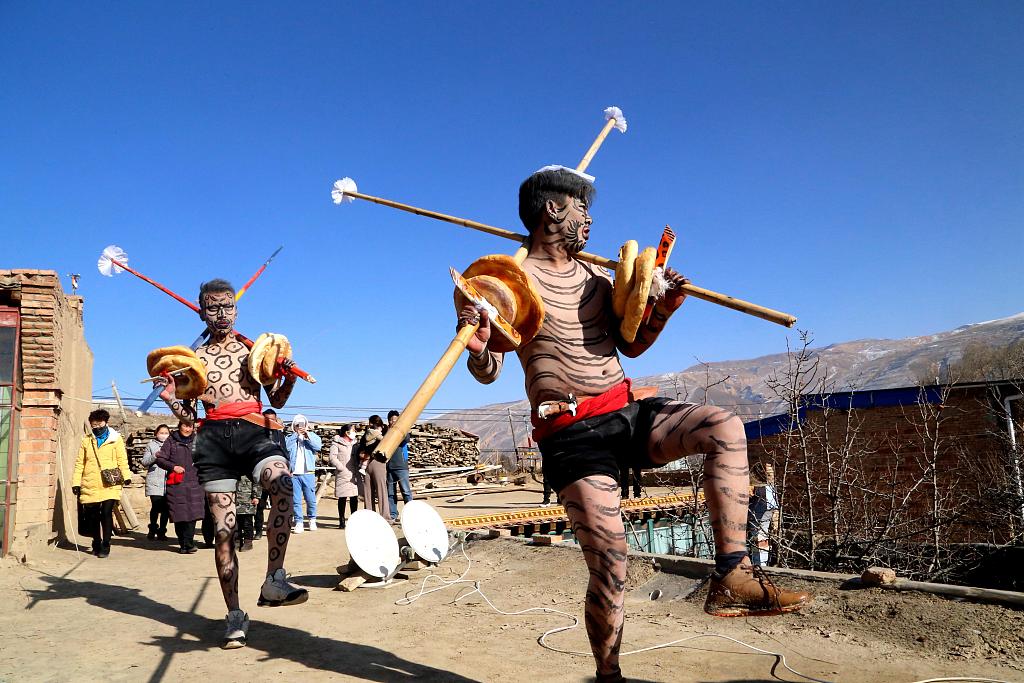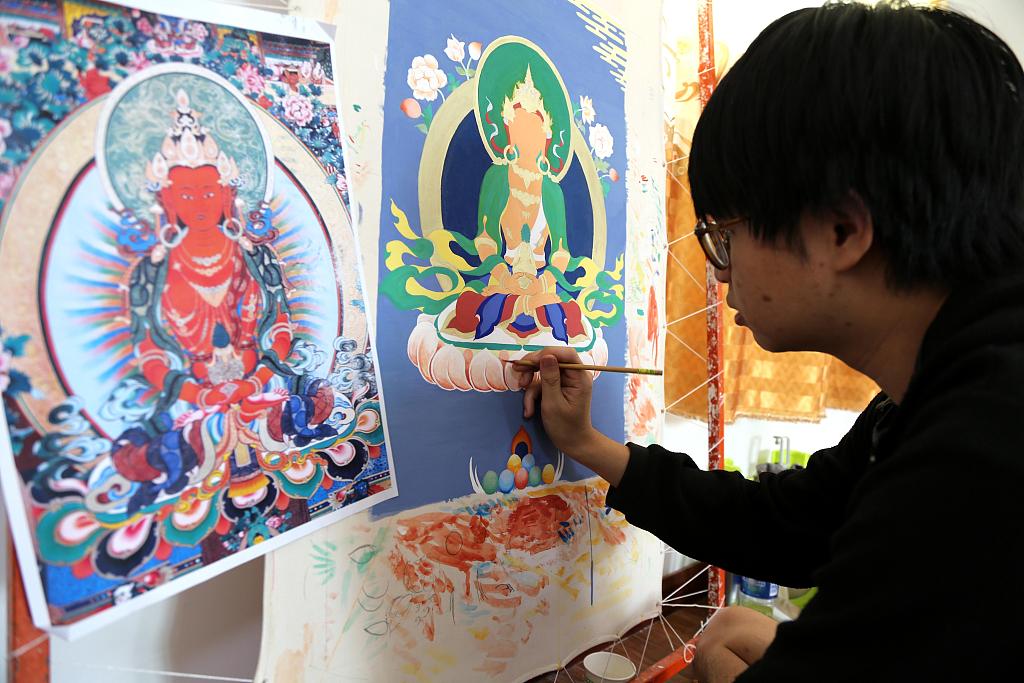Regong, meaning a golden valley where dreams are fulfilled in Tibetan, shines with its Tibetan Buddhist religion, folk arts, temples and monasteries.
Its culture features Regong arts (which include Thangka and mural paintings, barbola and patchwork crafts, and sculpting) as well as Huangnan Tibetan Opera, the Regong June Festival, Yutu Dance, Pan Embroidery, and more in Huangnan Tibetan Autonomous Prefecture, Qinghai.

A prominent Tibetan Buddhist monastery in Wutun Village of Huangnan Tibetan Autonomous Prefecture, Qinghai is believed to be the cradle of Regong arts. /CFP
A prominent Tibetan Buddhist monastery in Wutun Village of Huangnan Tibetan Autonomous Prefecture, Qinghai is believed to be the cradle of Regong arts. /CFP
Regong Thangka
Thangka is a Tibetan Buddhist scroll painting on cotton or silk with mineral and organic pigments derived from coral, agate, sapphire, pearl, gold, and other sources so that the color lasts for centuries.
As a category of thangka art, as well as one of the manifestations of Regong art, Regong Thangka boasts a series of unique features, such as full composition, bright colors, complicated and fine patterns, and liberal use of gold in outlining.

A scroll by a Regong Thangka painter is exhibited in Beijing. /CFP
A scroll by a Regong Thangka painter is exhibited in Beijing. /CFP
Mixing pigments is a technique exclusively used by Regong Thangka painters. Take the color gold, for example. Apart from gold foil, bone glue and water, local painters add juice from a plant native to the Huangnan region to the mixture, making the gold brighter and more lustrous.
Yutu Dance
While Tibetans account for the bulk of the population in the Huangnan region, the ethnic Tu are also well represented and have formed their own unique customs over thousands of years.

Two men painted with black patterns perform the "Yutu Dance" on a roof in Huangnan Tibetan Autonomous Prefecture, Qinghai. Ethnic Tu people use this ritual to ward off evil spirits. /CFP
Two men painted with black patterns perform the "Yutu Dance" on a roof in Huangnan Tibetan Autonomous Prefecture, Qinghai. Ethnic Tu people use this ritual to ward off evil spirits. /CFP
The Tu people in Nianduhu Village refer to tigers as "yutu." The Yutu Dance is a time-honored ritual held from November 5 to 20 every year based on the traditional Chinese calendar, showing their respect for this magnificent beast.
Dancers in shorts and shoes smear stove ash on their skin and paint black patterns on their face, legs and torso to imitate the markings of a tiger. They dance on the roof and in the yard of each household to dispel evil spirits, and accept buns and meat as a form of sacrifice.

A man studies thangka painting at Regong Art Academy in Huangnan Tibetan Autonomous Prefecture, Qinghai. /CFP
A man studies thangka painting at Regong Art Academy in Huangnan Tibetan Autonomous Prefecture, Qinghai. /CFP
To better preserve and promote Regong culture, Huangnan Tibetan Autonomous Prefecture was approved to be among the first batch of national level cultural ecology protection zones in 2019.
In the hope of promoting local ethnic cultures and unique art forms, authorities have launched various activities to attract tourists and introduced Regong arts by holding exhibitions in other cities and countries. They have also launched free exchange programs to allow those who are fascinated by Regong culture to study related crafts in the area.